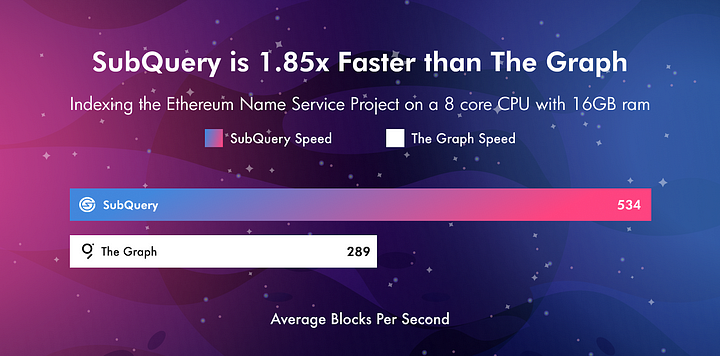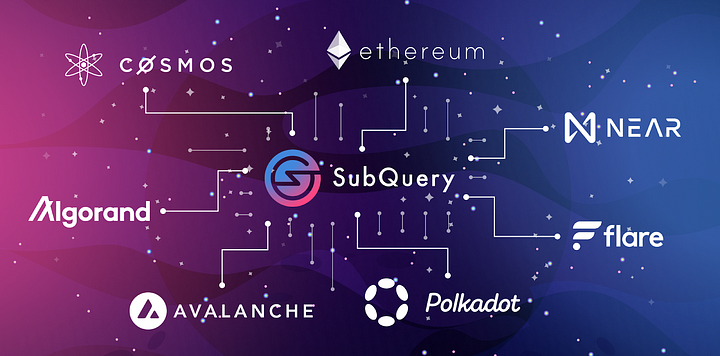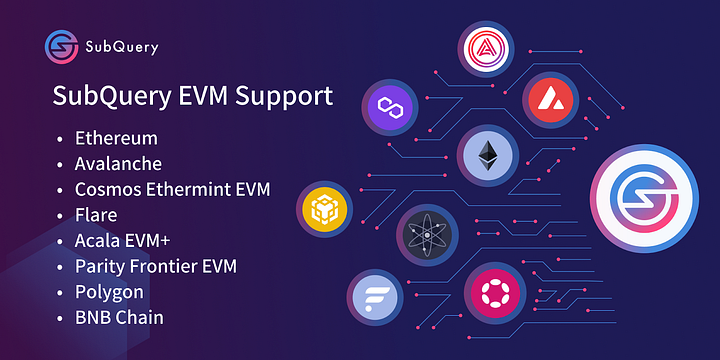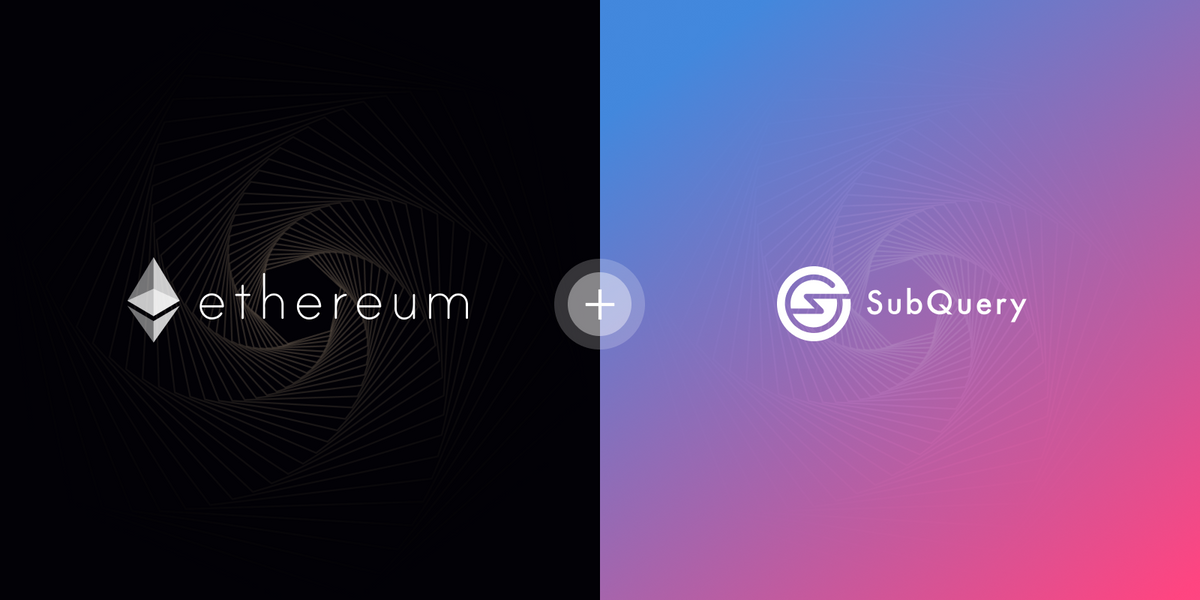SubQuery, the universal web3 data indexing toolkit, takes a significant step forward with today’s announcement of beta support for Ethereum. Despite being a beta release, SubQuery has already proven to be faster than The Graph, offering Ethereum developers another decentralised alternative with the impending launch of the SubQuery Network.
SubQuery’s decentralised data indexing solution provides developers with the tools needed to easily organise and query on-chain data for their protocol and applications. Abstracting the backend, SubQuery provides a custom API and lets developers focus on product development and user experience rather than building their own indexing solutions. The latest integration builds on SubQuery’s existing Ethereum Virtual Machine (EVM) support for other networks including Avalanche, Flare, Cosmos (Ethermint) and Polkadot (FrontierEVM).
Sam Zou, the Founder and CEO of SubQuery, said: “Ethereum has been on our radar since day one. Our experienced engineering team has put a lot of hard work into this integration, so that we can guarantee Ethereum developers will have a smooth and seamless experience indexing with SubQuery’s open-source SDK, tools and documentation . We can't wait to collaborate with teams building on Ethereum with the power of our fast, flexible and universal indexer.”

We've put together a comprehensive comparison of SubQuery, The Graph, and other popular indexers in our latest article.
Until now developers in the Ethereum ecosystem have had to rely on services such as The Graph for their data indexing requirements. However, with its existing beta support, SubQuery is already 1.85x faster than The Graph for common projects such as the standard Ethereum Name Service project. SubQuery achieves this by using multi-threading and optimisation of the store to reduce costly database writes. With faster sync times, developers can iterate faster and deliver features to market quicker.

SubQuery also brings some major improvements to existing decentralised indexing solutions which include far more flexibility and better controls for developers to run projects in their own infrastructure, plus the ability to support enterprise level projects in its managed service which provides enterprise-level infrastructure hosting and handles hundreds of millions of requests each day and unlike The Graph, will not be sunsetted.

Since its founding in 2021, SubQuery established itself as the leading data indexing solution in Polkadot and has achieved rapid growth by serving hundreds of millions of queries each day to leading projects such as Moonbeam and Acala. The success in Polkadot spurred SubQuery to integrate with other Layer-1 blockchains to become a truly universal solution, which will also extend to other EVM chains and Layer-2 scaling solutions, like Polygon, BNB, and Arbitrum in future.

SubQuery is currently focused on decentralising and tokenizing the protocol to build the SubQuery Network. The SubQuery Network will index and service data from projects to the global community in an incentivized and verifiable way and support indexing Ethereum projects, and those from any other supported Layer-1 from the outset.
The Ethereum integration is currently being tested with a small group of beta projects. If you would like to join SubQuery as an Ethereum launch partner or migrate from The Graph, please reach out to james.bayly@subquery.network.
Key Resources
- Developer documentation
- Getting started project (Github)
- Two quick start guides for Gravatars and the Ethereum Name Service
- An Ethereum Dictionary: Pre-computed indices to dramatically reduce indexing time
- Ethereum Developer Deep Dive
- Discord community (including technical support)
About Ethereum
Ethereum is a decentralized, open source, and distributed computing platform that enables the creation of smart contracts and decentralized applications, also known as dApps. It has its own native cryptocurrency called Ether and a programming language called Solidity. The Ethereum platform offers the computationally complete Ethereum Virtual Machine (EVM).
Website | Discord | YouTube | Twitter
About SubQuery
SubQuery is a blockchain developer toolkit enabling others to build Web3 applications of the future. A SubQuery project is a complete API to organise and query data from layer-1 chains. Currently servicing Polkadot, Substrate, Algorand, Cosmos, NEAR, Avalanche, and now Ethereum projects, this data-as-a-service allows developers to focus on their core use case and front-end, without needing to waste time on building a custom backend for data processing. The SubQuery Network proposes to enable this same scalable and reliable solution, but in a completely decentralised way.
Linktree | Website | Discord | Telegram | Twitter | Matrix | LinkedIn | YouTube

